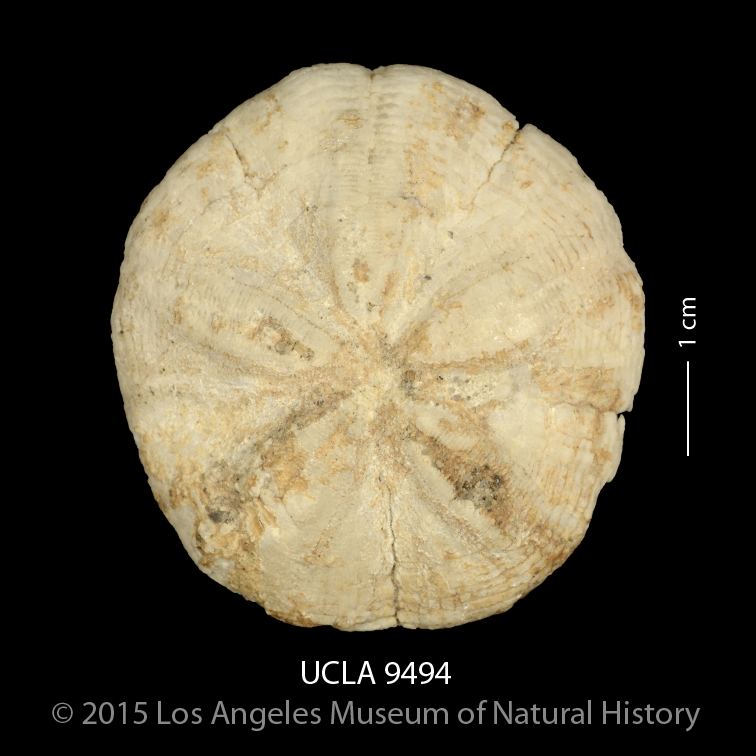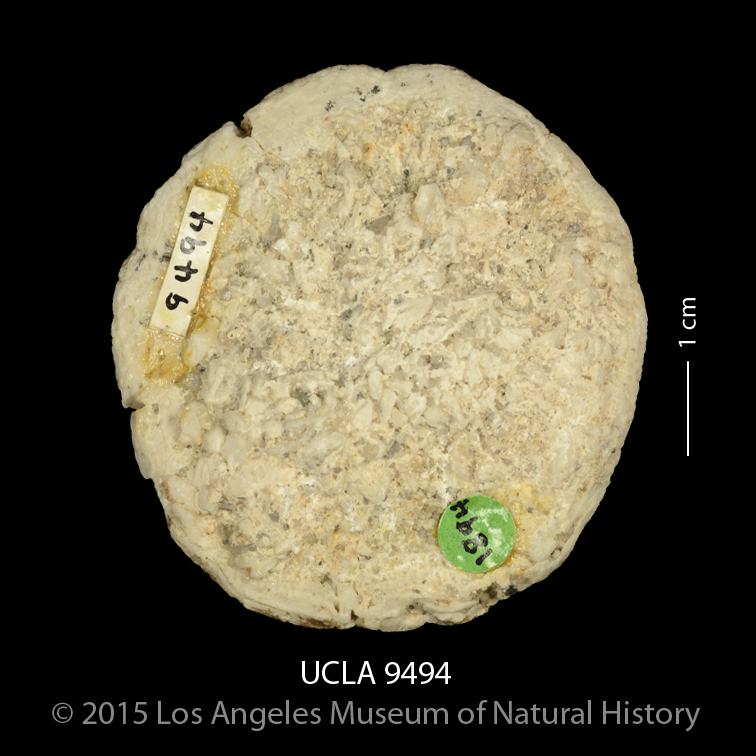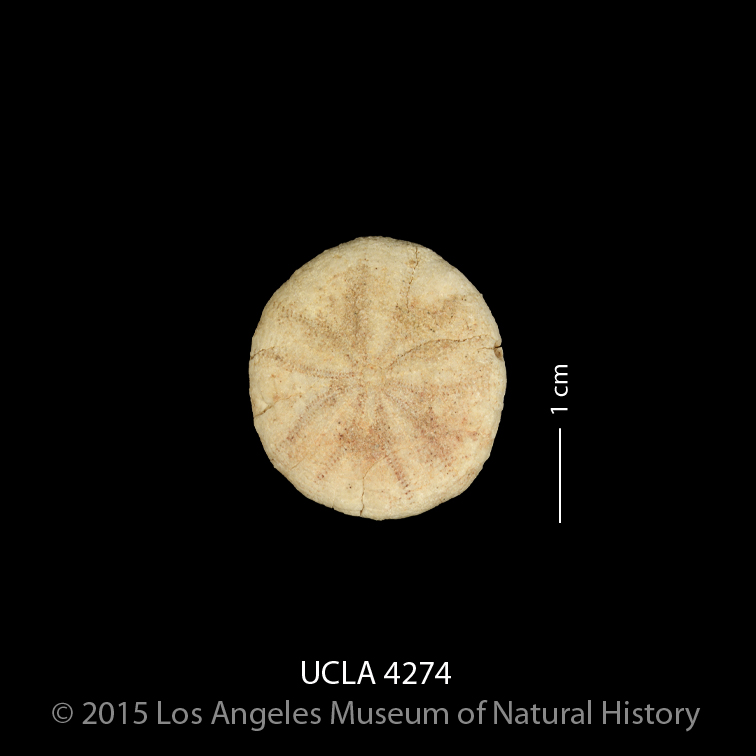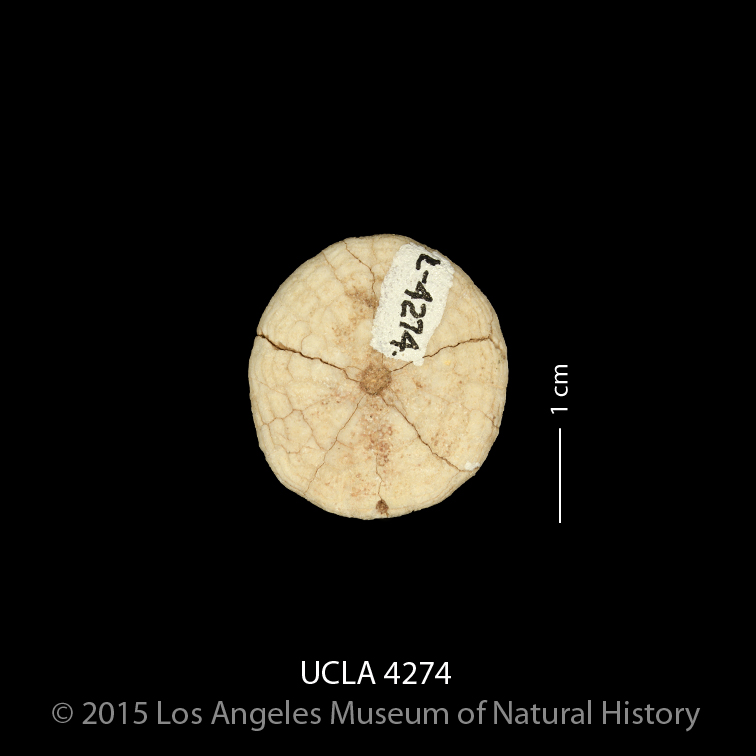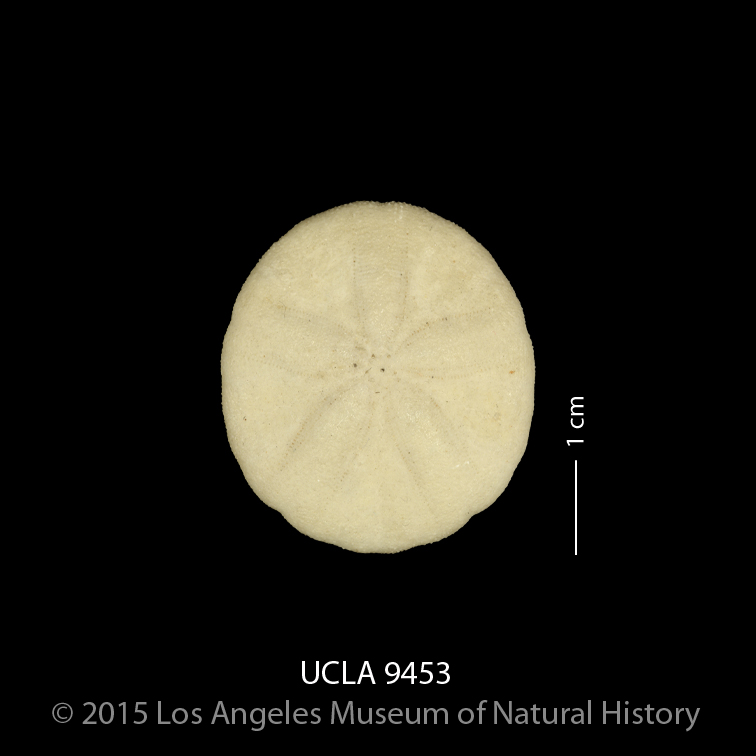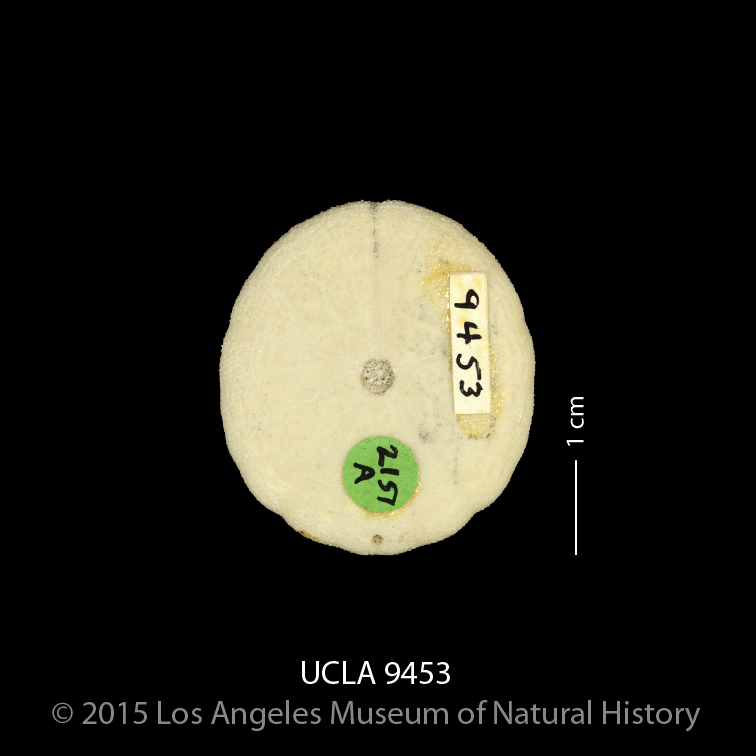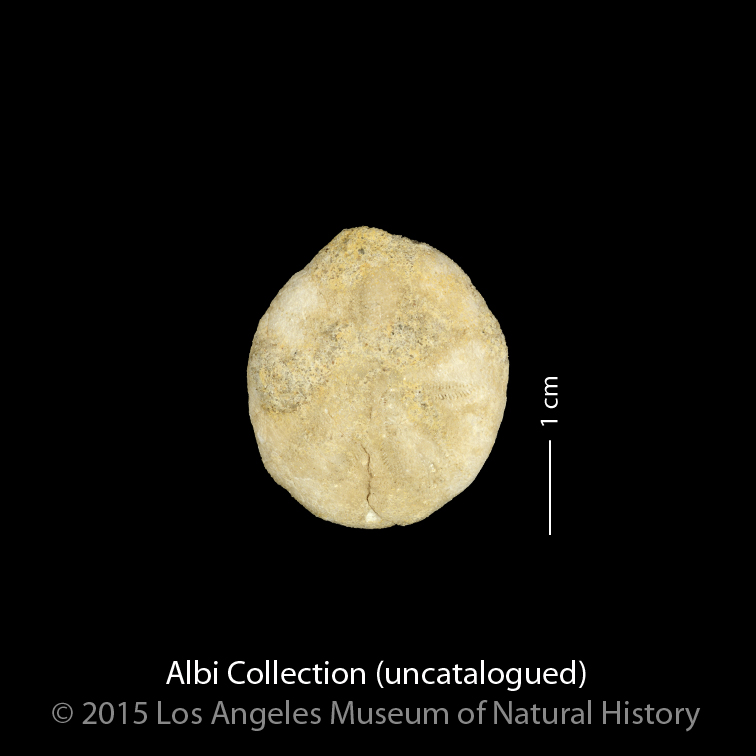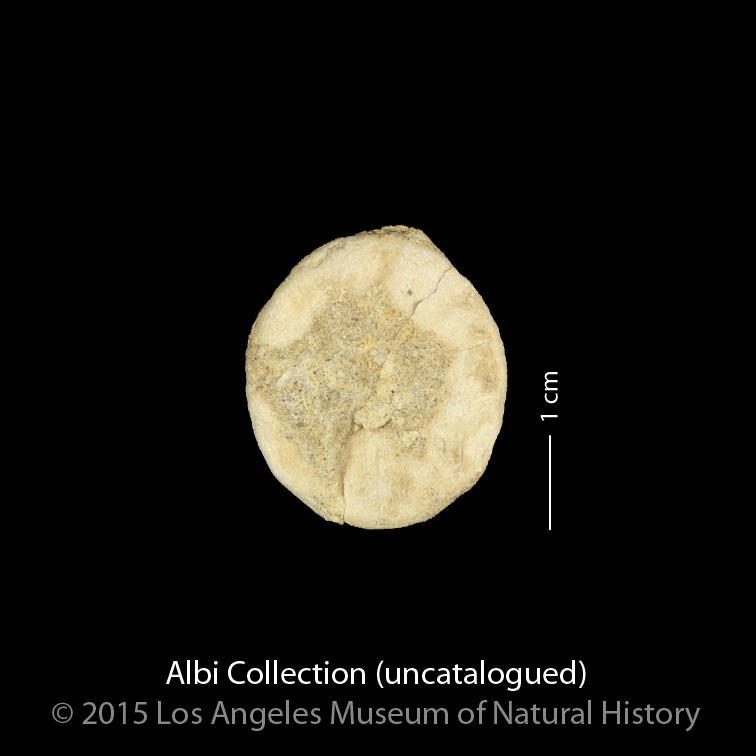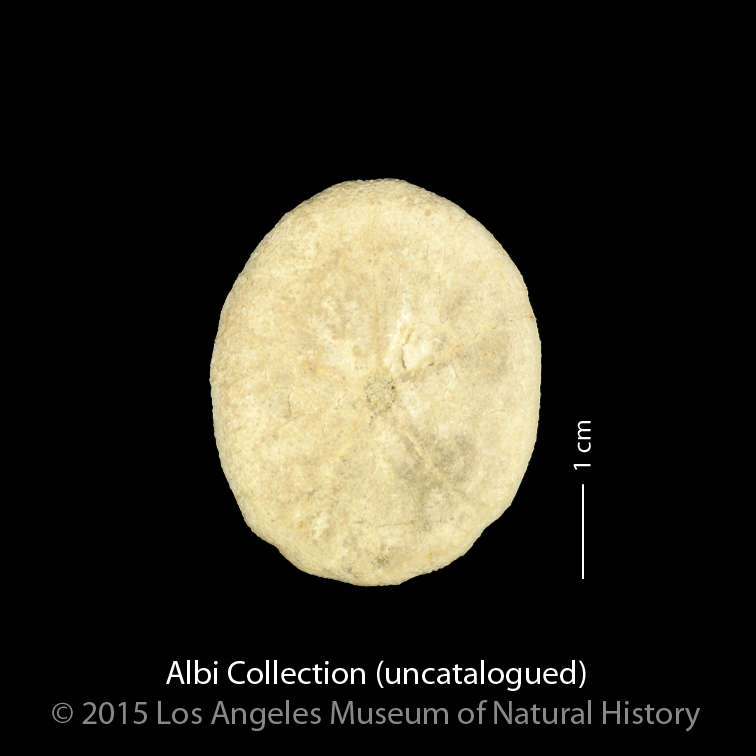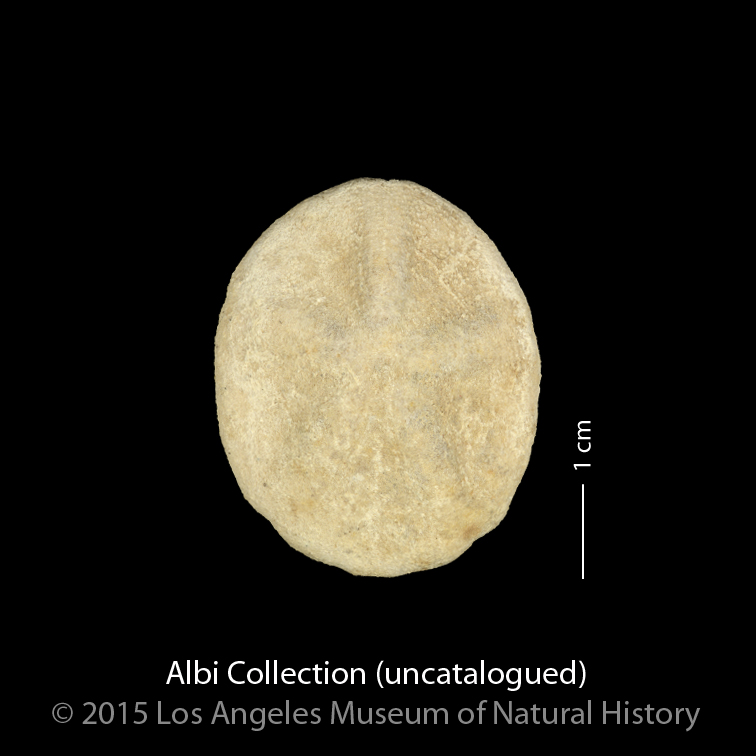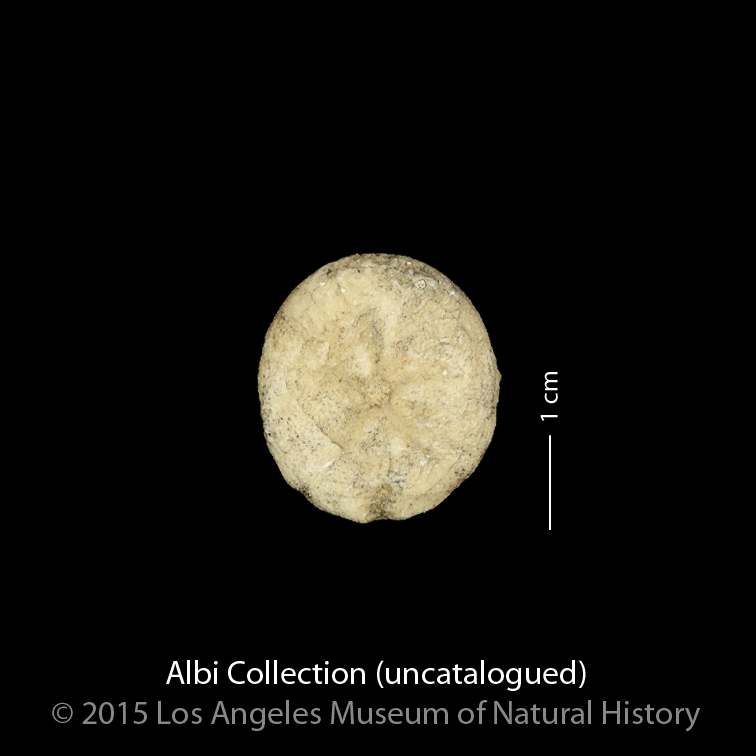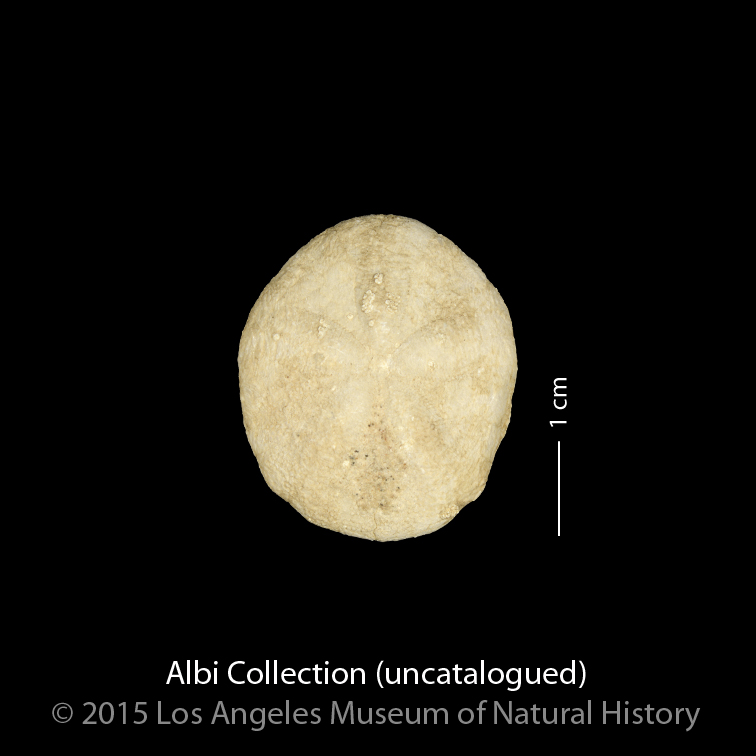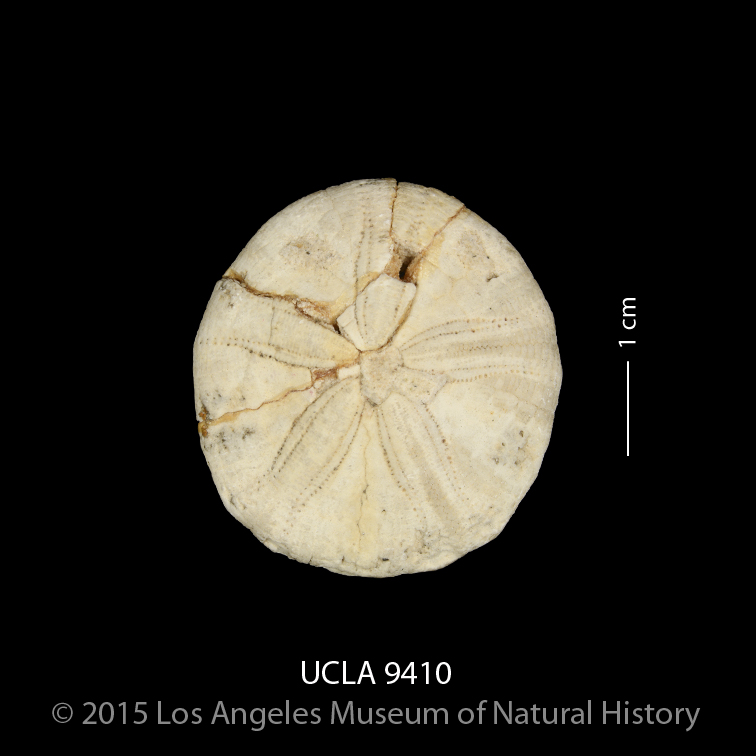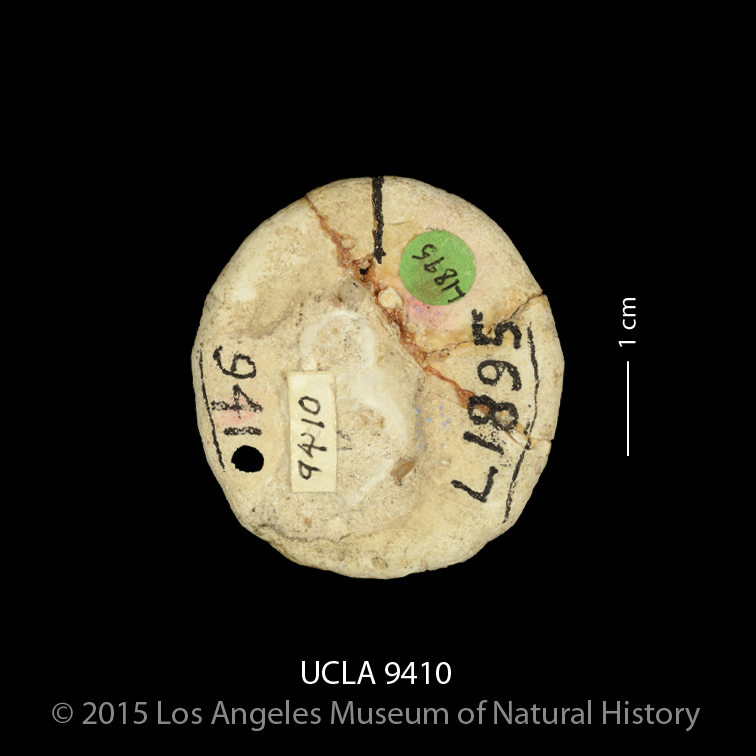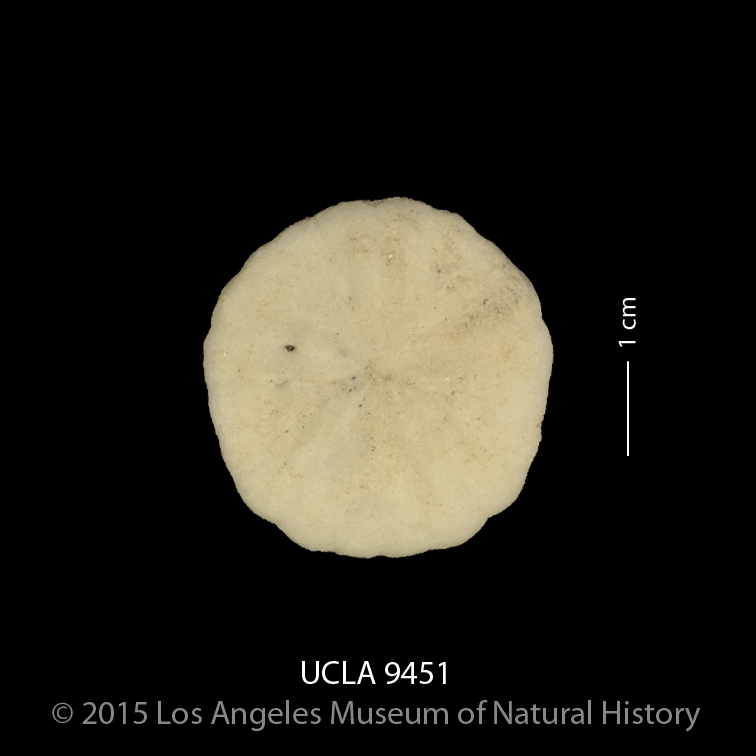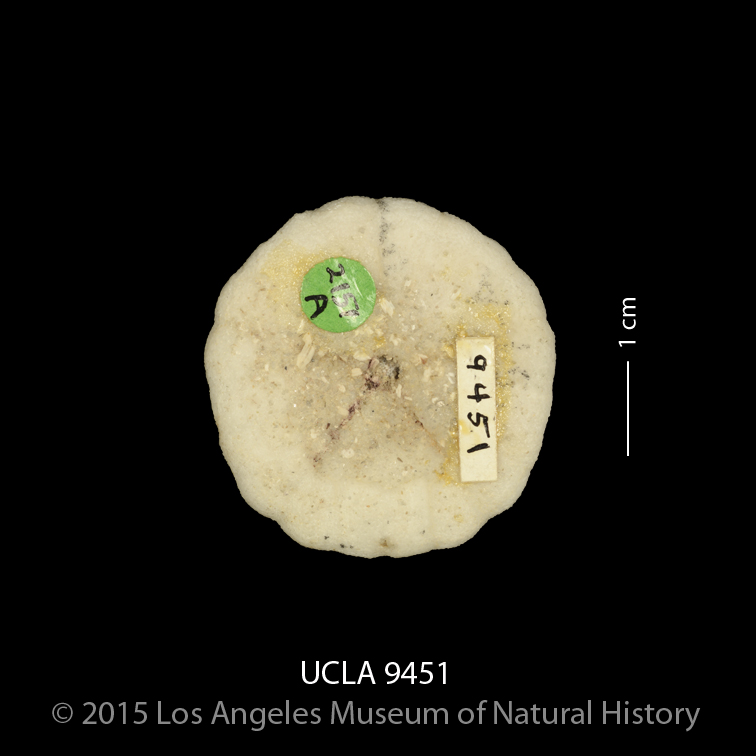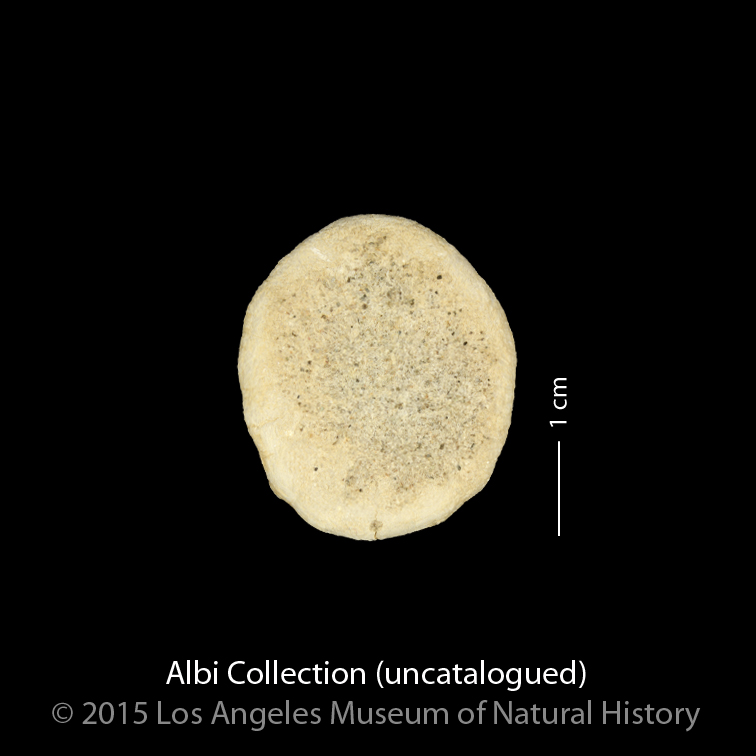Astrodapsis antiselli Conrad, 1856
Antisell’s sand dollar
Description: Test ranges from small- to medium-sized, rounded to subpentagonal, or slightly longer than broad. The margin of the test is moderately thin and occasionally indented between the petals. The upper surface is variable, and maybe either somewhat flattened in the middle of the test or conical. The petals may be flat-topped or rounded, and bordered by ridges. The areas between the ambulacral groves on the lower surface may be depressed.
Size: 35-40 mm (greatest diameter) and 30-35 mm (shortest diameter).
Ecology: Nearshore and innermost shelf (5-15 m water depth), often in association with tidal currents.
Geological range: Late Miocene to Early Pliocene (12-5 million years ago).
Geographic distribution: California. Reported from the Santa Margarita Formation (Miocene-Pliocene) and Neroly Formation (Miocene).
Comments: Hall (1962) grouped together formerly distinct species Astrodapsis tumidus Rémond, 1864, Astrodapsis altus Kew, 1915, Astrodapsis ornatus Kew, 1920, and Astrodapsis margaritanus Kew, 1920.
Click on thumbnails for larger view

